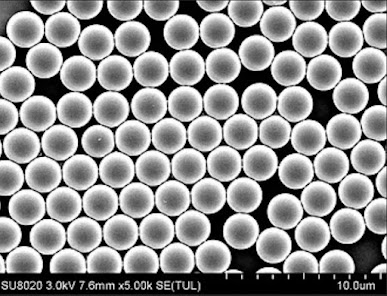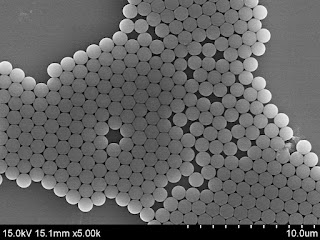In nanotechnology, nanoparticles have emerged as versatile and powerful entities with a myriad of applications. Among them, magnetic nanoparticles stand out, combining the unique properties of silica with the responsiveness to external magnetic fields.
Silica nanoparticles are
minute particles composed primarily of silicon dioxide, the same compound found
in quartz and sand. Their nanoscale size, typically ranging from 1 to 100
nanometers, imparts distinctive properties that make them exceptional
candidates for diverse applications.
- Biomedical Marvels: The Silica nanoparticles have garnered
significant attention in the field of medicine. Their biocompatibility,
low toxicity, and ease of functionalization have made them ideal
candidates for drug delivery systems, imaging agents, and applications.
Researchers are exploring the potential of silica nanoparticles to target
specific cells, release drugs in a controlled manner, and enhance medical
diagnostics.
- Precision Engineering: These nanoparticles
find applications in various industries, including electronics, catalysis,
and materials science. Their ability to act as catalyst supports,
reinforcing agents, or templates for the synthesis of other nanomaterials
makes them indispensable in the development of advanced materials with
tailored properties.
It is a hybrid of silica and
magnetic materials like iron oxide, bring an additional dimension to the
already impressive attributes of silica nanoparticles. These nanoparticles
exhibit super paramagnetic behavior, meaning they become magnetic in the
presence of an external magnetic field and lose their magnetization when the
field is removed.
- Biomedical Imaging: In the realm of
medical diagnostics, Magnetic Silica Nanoparticles offer a magnetic resonance imaging (MRI) contrast
enhancement. When functionalized with specific targeting molecules, these
particles can be directed to specific tissues or cells, allowing for highly
precise and targeted imaging. This holds great promise for early disease
detection and personalized medicine.
Silica Nanoparticles - Targeted Drug Delivery: This can be guided to
specific areas within the body using external magnetic fields. This
targeted drug delivery system minimizes side effects by ensuring that
therapeutic agents reach the intended site with precision. The ability to
remotely control the nanoparticles' movement within the body opens up new
possibilities for localized and efficient drug delivery.
- Environmental Cleanup: Beyond the realm of
medicine, Magnetic Silica
Nanoparticles play a crucial role in environmental remediation. Their magnetic properties enable them to be
easily separated from complex mixtures, making them effective tools for
the removal of pollutants from water and soil. Applications include the
removal of heavy metals, organic pollutants, and oil spills.
The Silicananoparticles and their magnetic counterparts represent a groundbreaking
convergence of materials science, chemistry, and physics. Their unique
properties and the ability to tailor them for specific applications have
sparked a wave of innovation across various industries, from medicine to
environmental science.





.jpg)

